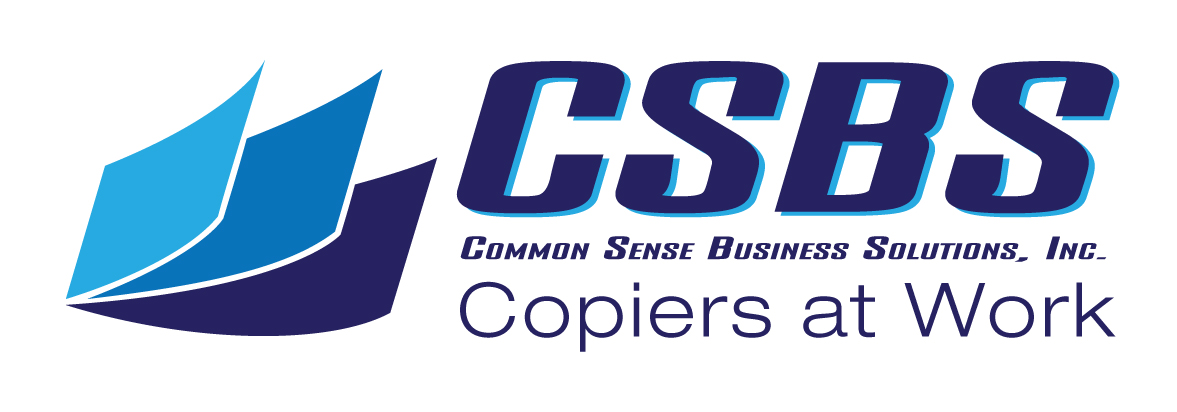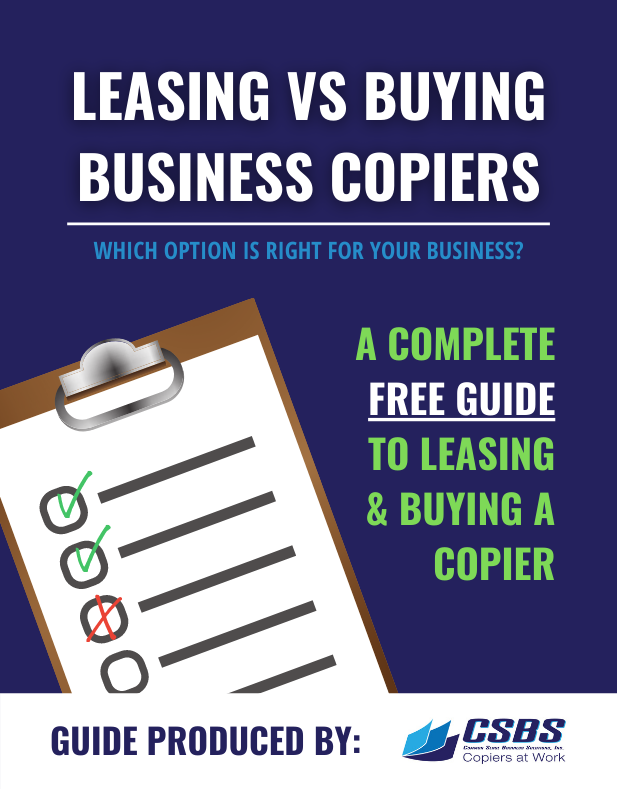Multifunctional printers have become vital tools for any business. Gone are the days when businesses are required to invest in multiple devices to accomplish tasks related to printing and copying. Before you invest in a multifunctional printer, it’s helpful to understand just what they are and how they can help you get the job done.
What is a multifunctional printer?
A multifunctional printer (or MFP) is basically what the name implies: a device that can handle several different tasks. Typically, a multifunctional printer includes the ability to photocopy documents, print them from a computer, and scan hardcopy documents to create digital files. In addition, modern MFPs usually have the capability to send a fax digitally from your computer, eliminating the need to print a hardcopy of documents before faxing. Some devices, such as the Konica Minolta Bizhub 4050 also include a standalone fax feature that allows you to send faxes in the traditional way by dialing the phone number of the recipient and scanning the document. Many multifunctional devices also come with the option to add a finisher, which can staple, hole punch, fold, or saddle stitch documents. These features are a great way to save time and reduce human error.
Boosted productivity
The primary reason to invest in a multifunctional device is that they boost productivity and make it easier to work efficiently. The feature that distinguishes a multifunctional device from an all-in-one printer is that an MFP can complete multiple tasks simultaneously. For instance, a true MFP is able to scan or fax a document while another document is printing. It can copy multiple documents and queue the jobs, rather than forcing the user to wait for each job to finish before copying the next. Features such as internal processing, memory, and wireless capability make it possible to seamlessly handle these tasks from multiple users at once. Modern MFPs can also communicate with not only standard computers, but also tablets and mobile phones by using software such as the PageScope Mobile App. It is even possible to print documents directly from a USB thumb drive, a great feature for guests who may not have the necessary printer drivers installed on their computers. All of these great features allow your business to run more efficiently and to keep up with the high-paced demands of your industry.
Easier maintenance
Opting for a multifunctional device can save your IT department time, energy, and money. If you purchase multiple devices to handle printing, copying, scanning, and faxing, you may end up with four or more devices that all need to be maintained. This means that your IT department will spend more time doing things like updating software and installing the devices on different computers in the office. In contrast, an MFP reduces the work load to one device, making it easier for your tech department to keep up. Plus, you’ll only have to worry about replacing toner or performing routine cleaning and maintenance on one device. This can help you save money over the long run. Another added benefit of reducing redundant devices is that you create more space in your office. This will give employees more room to work and reduce feelings of being cramped or cluttered.
Opting for a multifunctional device is a smart move for businesses. The ability to print, scan, copy, and fax in one central location makes it easy to see why Konica Minolta devices have earned the name Bizhub. Increasing workflow for employees, reducing the burden of device maintenance, and saving space in your office are just a few of the benefits of choosing multifunctional printers. Contact us for more information.
Frequently Asked Questions
What is a multifunctional printer, and why should I invest in one?
A multifunctional printer (MFP) combines printing, scanning, copying, and faxing in one device. It streamlines office workflows, allowing users to perform several tasks simultaneously, like printing while scanning. MFPs help businesses save time, reduce clutter, and improve productivity. They also come with advanced features like finishing options (stapling, folding) that make document handling easier. By consolidating devices, you cut maintenance costs and free up valuable office space.
How do multifunctional printers improve office productivity?
MFPs are designed for multitasking. Unlike traditional printers, an MFP can handle multiple functions at once, such as copying and scanning simultaneously. With features like high-speed printing, internal memory for storing jobs, and wireless connectivity to mobile devices, employees can work more efficiently. In fact, some models, like the Konica Minolta Bizhub, allow users to print directly from a USB drive, which saves time and simplifies guest access.
Can multifunctional printers help reduce office expenses?
Yes, investing in an MFP can significantly reduce costs. Instead of maintaining multiple machines for scanning, printing, copying, and faxing, an MFP consolidates everything into one, reducing energy consumption, toner usage, and maintenance expenses. Additionally, MFPs have eco-friendly features like recycled ink cartridges and energy-saving settings that can lower your overall operational costs over time.
How do multifunctional printers help manage document workflows?
Multifunctional printers streamline document workflows by offering advanced features like collation, duplexing, and automatic document feeders. These features reduce manual handling of documents, ensuring that everything from a simple print job to a booklet creation is automated and efficient. Some MFPs even support cloud-based storage and mobile printing, making it easier to share and store documents without extra steps.
What features should I look for in a multifunctional printer?
When choosing an MFP, look for features like wireless connectivity, cloud integration, high-speed printing, and a user-friendly interface. Advanced features such as duplex printing, automatic document feeders, and finishing tools like stapling and folding can further enhance productivity. If your business deals with high print volumes, opt for a machine with large paper capacity and efficient toner usage to keep costs low.
Do multifunctional printers offer eco-friendly options?
Yes, modern multifunctional printers come equipped with eco-friendly settings. Many MFPs, including Konica Minolta models, support features like duplex printing to save paper, recycled ink cartridges to reduce waste, and energy-saving modes to minimize electricity consumption. You can also monitor usage by department, helping you better manage resources and lower your environmental footprint.
Can I print from mobile devices using a multifunctional printer?
Absolutely! Most modern MFPs, such as those from Konica Minolta, offer mobile printing capabilities. With apps like PageScope Mobile, users can print documents directly from their smartphones or tablets without the need for a desktop computer. This feature is particularly handy for businesses with remote workers or guests who need quick access to printing.
What are the benefits of a multifunctional printer’s finishing features?
Finishing features in an MFP save time by automating tasks like stapling, hole-punching, folding, and even booklet creation. These features are especially useful for businesses that frequently produce reports, marketing materials, or large-volume documents. By eliminating manual tasks, finishing options reduce errors and increase productivity, allowing your team to focus on more important tasks.
How do multifunctional printers simplify IT management?
MFPs reduce the burden on your IT department by consolidating devices into one machine. Instead of maintaining separate printers, scanners, and fax machines, IT teams only need to manage a single device. This includes software updates, troubleshooting, and maintenance, which saves time and reduces operational complexity. Furthermore, modern MFPs offer remote management options, allowing IT staff to monitor and troubleshoot devices from a central location.
What’s the difference between a multifunctional printer and an all-in-one printer?
While both MFPs and all-in-one printers handle similar tasks, MFPs are designed for higher workloads and can perform multiple tasks simultaneously. For example, an MFP can scan while printing, while an all-in-one printer typically handles one task at a time. MFPs also come with more advanced features such as larger paper capacities, finishing tools, and higher-speed operations, making them ideal for larger businesses or high-volume environments.

